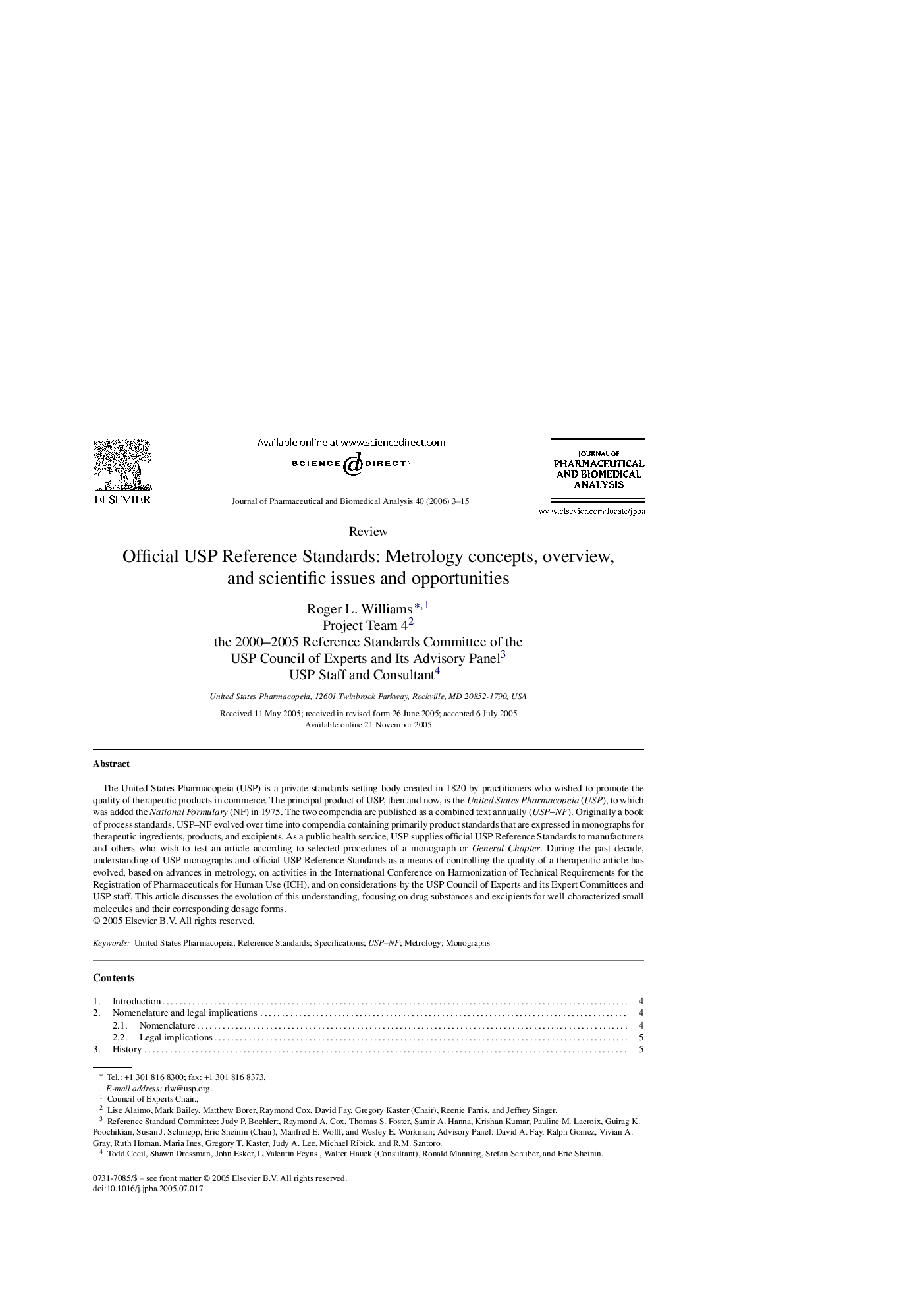| Article ID | Journal | Published Year | Pages | File Type |
|---|---|---|---|---|
| 1224741 | Journal of Pharmaceutical and Biomedical Analysis | 2006 | 13 Pages |
The United States Pharmacopeia (USP) is a private standards-setting body created in 1820 by practitioners who wished to promote the quality of therapeutic products in commerce. The principal product of USP, then and now, is the United StatesPharmacopeia (USP), to which was added the National Formulary (NF) in 1975. The two compendia are published as a combined text annually (USP–NF). Originally a book of process standards, USP–NF evolved over time into compendia containing primarily product standards that are expressed in monographs for therapeutic ingredients, products, and excipients. As a public health service, USP supplies official USP Reference Standards to manufacturers and others who wish to test an article according to selected procedures of a monograph or General Chapter. During the past decade, understanding of USP monographs and official USP Reference Standards as a means of controlling the quality of a therapeutic article has evolved, based on advances in metrology, on activities in the International Conference on Harmonization of Technical Requirements for the Registration of Pharmaceuticals for Human Use (ICH), and on considerations by the USP Council of Experts and its Expert Committees and USP staff. This article discusses the evolution of this understanding, focusing on drug substances and excipients for well-characterized small molecules and their corresponding dosage forms.
